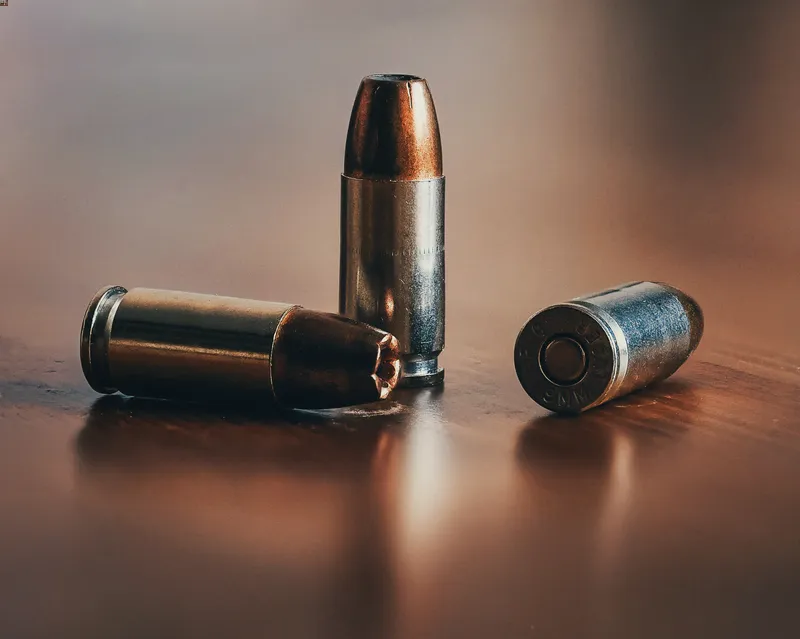Ammunition Pro Llc - Questions
Ammunition Pro Llc - Questions
Blog Article
The Basic Principles Of Ammunition Pro Llc
Table of ContentsThe smart Trick of Ammunition Pro Llc That Nobody is Talking AboutThe Ultimate Guide To Ammunition Pro LlcUnknown Facts About Ammunition Pro LlcThe Buzz on Ammunition Pro LlcAmmunition Pro Llc for Beginners
The standard parts of ammunition are the very same for rifle, pistol, and shotgun ammunition. Today we're looking at the what the standard parts of ammo are and exactly how they function together to discharge a round.It houses the primer and powder. The bullet is seated in the open end of the instance. When you terminate a bullet out of a semi-auto weapon, the gun's extractor lifts the case from the firing chamber and it flies out of the weapon. The case is likewise in some cases described as shells, brass, or casings.
A weapon's shooting pin strikes a cartridge's guide. The primer is a metal mug that holds an eruptive chemical substance. When the firing pin strikes the guide cap, it crushes the priming substance against the anvil. This creates a little surge in the event that ignites the propellant. The primer is located in the edge of the situation of a rimfire cartridge.
Ammunition Pro Llc for Beginners
Gunpowder following to the case that generally has it. It is generally a mixture of saltpeter, charcoal, and sulfur.

We call the projectiles for shotshells, which we discharge via shotguns, slugs and shot. A slug is one strong item, usually constructed out of lead. Shot is a team of pellets made out of lead, steel, bismuth, or tungsten alloy. Shot pellets can come in different dimensions and quantities. Now that you have a standard understanding of the basic components of ammo, you can really feel a bit a lot more positive in how your weapon and ammunition feature!.
Ammunition Pro Llc Fundamentals Explained
Stay on par with Special Deals, Advance Notice of Sales, and Store Events
Fun fact: Grains are made use of to define the mass of a bullet because completely back in the very early days of guns, it was a dispenser's unit of measurement, and a common denominator was required to determine just how much cause utilize to make actors lead bullets (Buy Ammo Online). 'Grains' as a system of step for weight copulates back to ancient times, and stands for the weight of a grain of wheat

(https://www.anibookmark.com/user/ammunitiondde.html)For referral, the weight of a paper clip has to do with 16 gr. So, we recognize that grains are a step of mass, and much more = heavier, and heavy is great, appropriate? Yes, heavy is good, however mass of the projectile isn't the only thing you require to take into consideration when choosing a round for your firearm.
Ammunition Pro Llc for Beginners
Enjoyable truth, this is the origin of the term "Rifle" ex-spouse. The effect this spin has on projectiles is a stabilizing one the bullet revolving keeps the nose pointed directly, in the exact same means that a perfectly spiraled football throw is going to be much more stable and exact in trip than an awful duck, end over end toss.
Exactly how does this relate to grain weight? Imagine you're on one of those play ground slide carousels, the ones with bars you hold on to while it rotates.
The very same result takes place with bullets. The larger the projectile, the more result a faster rotate will have on it.
How Ammunition Pro Llc can Save You Time, Stress, and Money.
There's an additional element that we have to think about when picking a grain weight for our ammo. As hinted at above, bullet velocity, or the rate of the projectile, is a significant element when figuring out the most effective grain weight projectile to utilize. Rate is impacted by a couple of major variables, consisting of the kind and amount of propellant (gunpowder), barrel length, and bullet weight.

The most common grain weight rounds for 9x19mm cartridges are 115gr and 124gr. These are typically lead core, completely jacketed (FMJ) rounds. Both of these grain weight cartridges will carry out well in manufacturing facility 9mm handguns, to typical pistol ranges (approximately 50 yards). 115 grain rounds are the most typical (and therefore least pricey).
Report this page